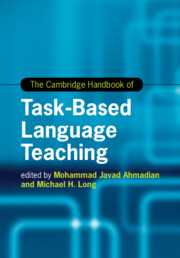Book contents
- The Cambridge Handbook of Task-Based Language Teaching
- Cambridge Handbooks In Language And Linguistics
- The Cambridge Handbook of Task-Based Language Teaching
- Copyright page
- Dedication
- Contents
- Figures
- Tables
- Contributors
- Preface The Origins and Growth of Task-Based Language Teaching
- Part I The Rationale for Task-Based Language Teaching
- Part II Tasks and Needs Analysis
- Part III The Task Syllabus and Materials
- Part IV Methodology and Pedagogy
- Part V Task-Based Language Teaching with School-Age Children
- 11 Child Interaction in Task-Supported EFL/CLIL Contexts
- 11A Tasks for Children
- 11B A Case Study of a Task-Based Approach for School-Age Learners in China
- Part VI The Teacher in Task-Based Language Teaching
- Part VII Task-Based Assessment and Program Evaluation
- Part VIII Research Needs and Future Prospects
- Index
- References
11A - Tasks for Children
Using Mainstream Content to Learn a Language
from Part V - Task-Based Language Teaching with School-Age Children
Published online by Cambridge University Press: 19 November 2021
- The Cambridge Handbook of Task-Based Language Teaching
- Cambridge Handbooks In Language And Linguistics
- The Cambridge Handbook of Task-Based Language Teaching
- Copyright page
- Dedication
- Contents
- Figures
- Tables
- Contributors
- Preface The Origins and Growth of Task-Based Language Teaching
- Part I The Rationale for Task-Based Language Teaching
- Part II Tasks and Needs Analysis
- Part III The Task Syllabus and Materials
- Part IV Methodology and Pedagogy
- Part V Task-Based Language Teaching with School-Age Children
- 11 Child Interaction in Task-Supported EFL/CLIL Contexts
- 11A Tasks for Children
- 11B A Case Study of a Task-Based Approach for School-Age Learners in China
- Part VI The Teacher in Task-Based Language Teaching
- Part VII Task-Based Assessment and Program Evaluation
- Part VIII Research Needs and Future Prospects
- Index
- References
Summary
This case study is based on research undertaken in a primary school in Western Australia – one that has adopted content and language integrated learning (CLIL) as an approach for teaching. The decision to use CLIL was made by the school leadership, in consultation with the school community, motivated by the seeming lack of effectiveness of previous language other than English (LOTE) programs that had been taught at the school. Because CLIL enables students to learn both content, in this case mathematics, and simultaneously a foreign language – Mandarin – its potential as an effective pedagogy has been enthusiastically embraced at the school, as it has been elsewhere. As with many CLIL programs, at this school it is underpinned by the use of content-focused pedagogic tasks, allowing us to closely examine the interface between CLIL and task-based language teaching (TBLT).
- Type
- Chapter
- Information
- The Cambridge Handbook of Task-Based Language Teaching , pp. 416 - 431Publisher: Cambridge University PressPrint publication year: 2021

